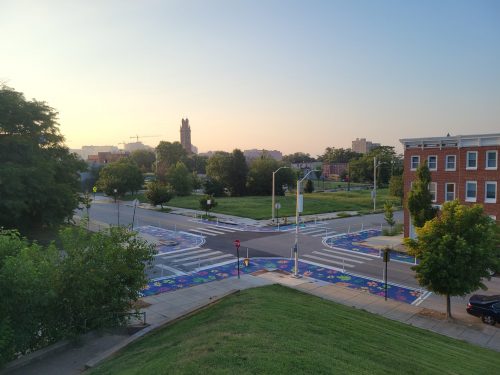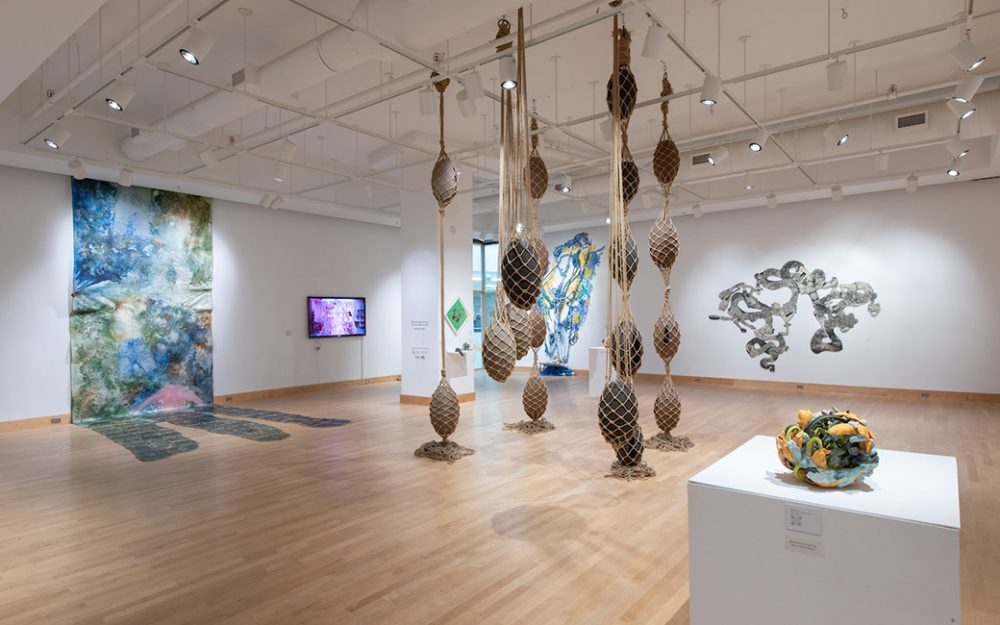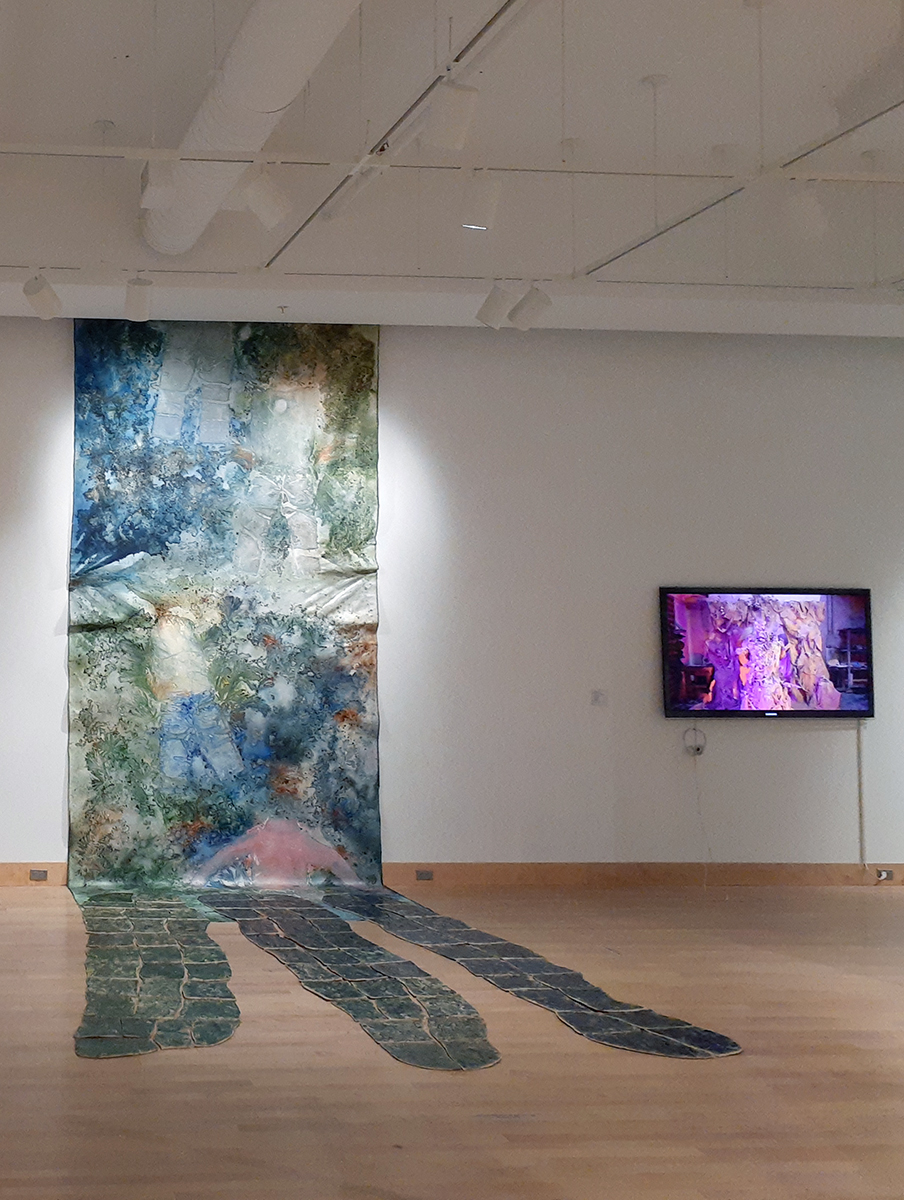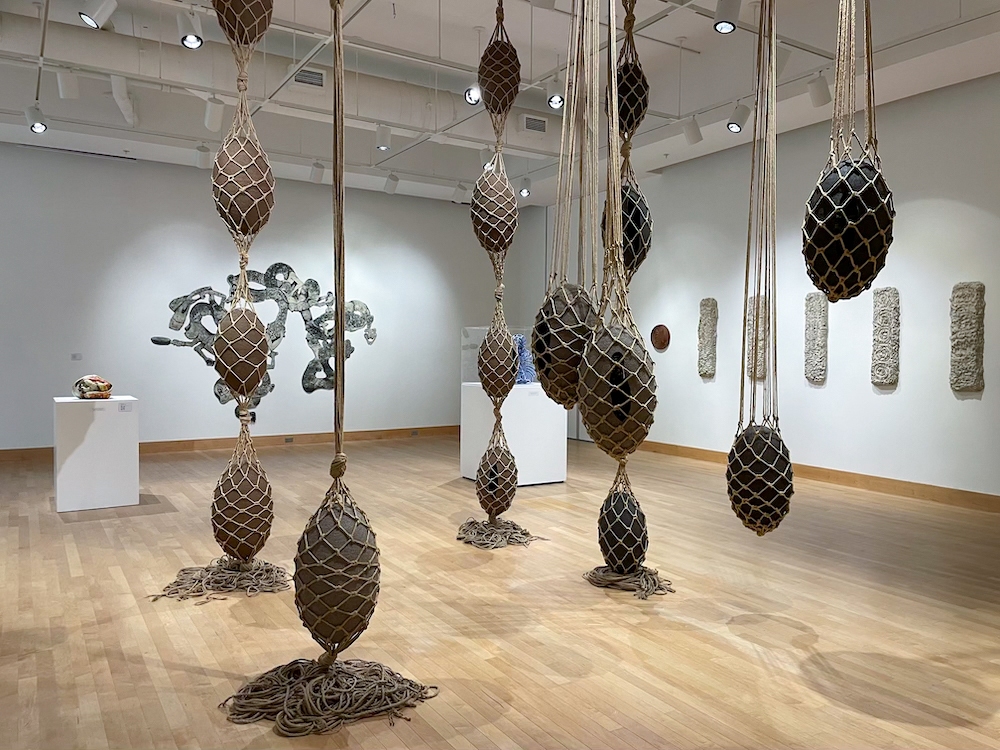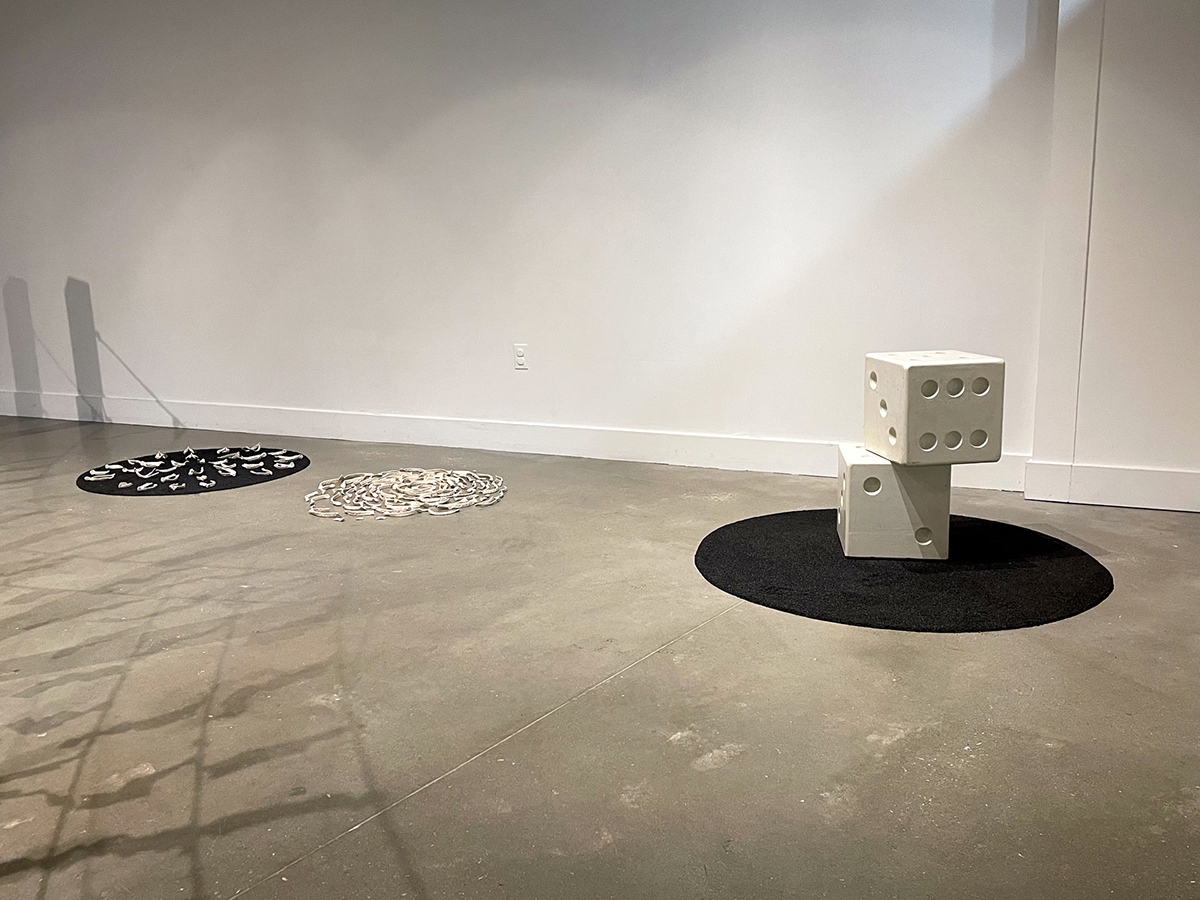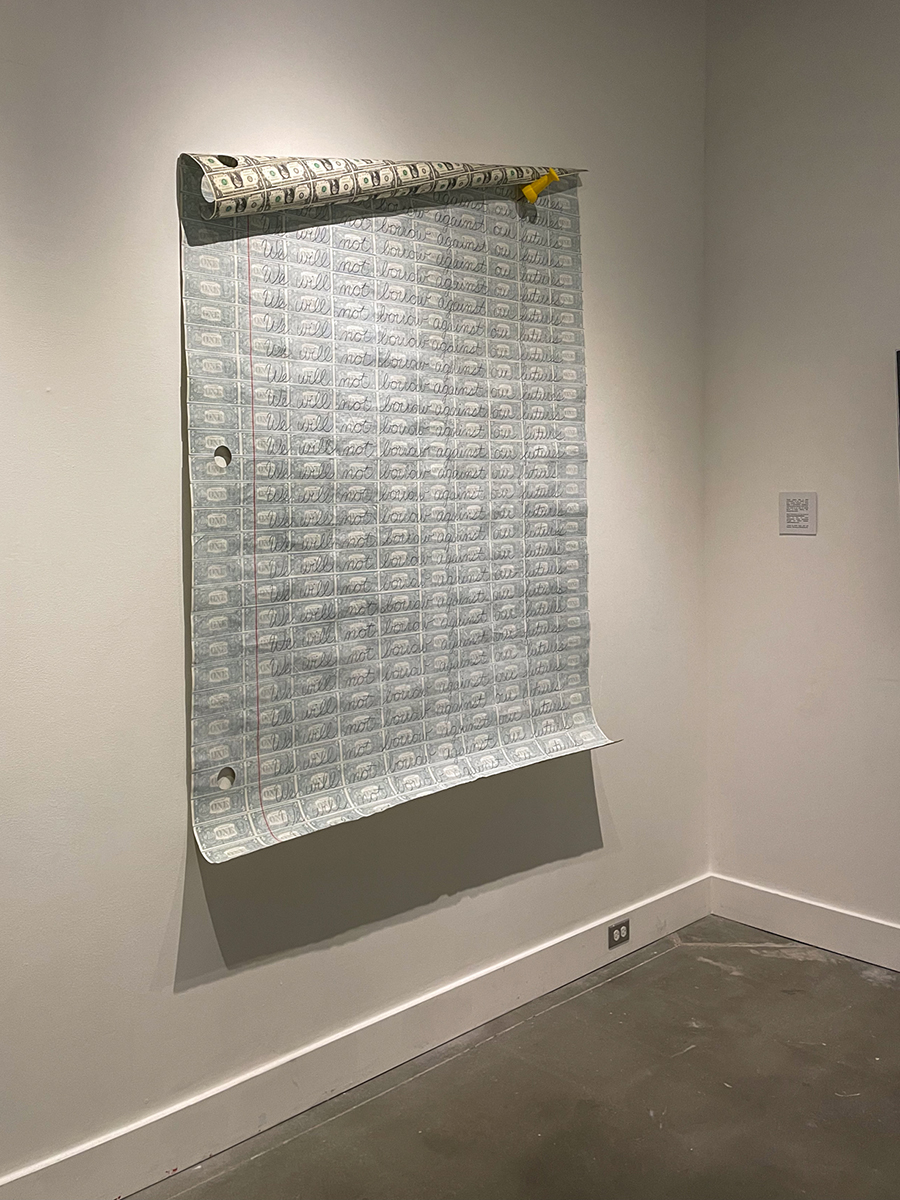Ex-tend, Ex-cess: Metamorphosis in Clay at Towson University Center for the Arts Gallery
Ex-tend, Ex-cess: Metamorphosis in Clay is a compelling celebration of the versatility of ceramics. The sculptures, installations, and video works vary in scale, content, and textures, but an overall unifying theme of action, transformation, and impression is palpable throughout. The genre of ceramics is pushed beyond its expected functional uses into conceptually driven, often abstracted pieces, each well-crafted, showcasing the technique and talent of the diverse artists.
The artist’s full body is often necessary to work clay, and this impression and process are viscerally felt in Brie Ruais’ “Mapping the Memory of Last Summer’s Garden with Five Potted Plants in the Studio” (February 2019). The large wall relief, about 6 by 8 feet, is deeply textured and acts as an archive of the artist dragging, pushing, and spreading out clay. This act of recording showcases a direct connection to the landscape, which often acts as a witness to human development and suffering.
A photograph of a larger performance within the landscape, called “Photograph of Uncontrollable Drifting Inward and Outward Together,” captures an imprint of the artist’s body. The soft, clay-like soil is also pushed and shaped around the outline of a figure reminiscent of Ana Mendieta’s earthworks.

